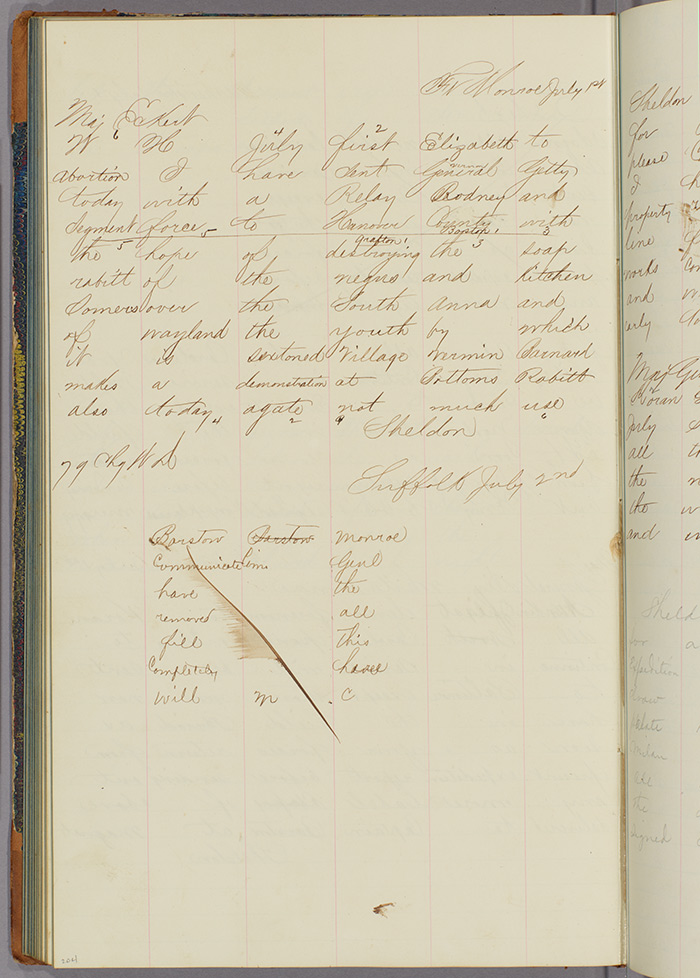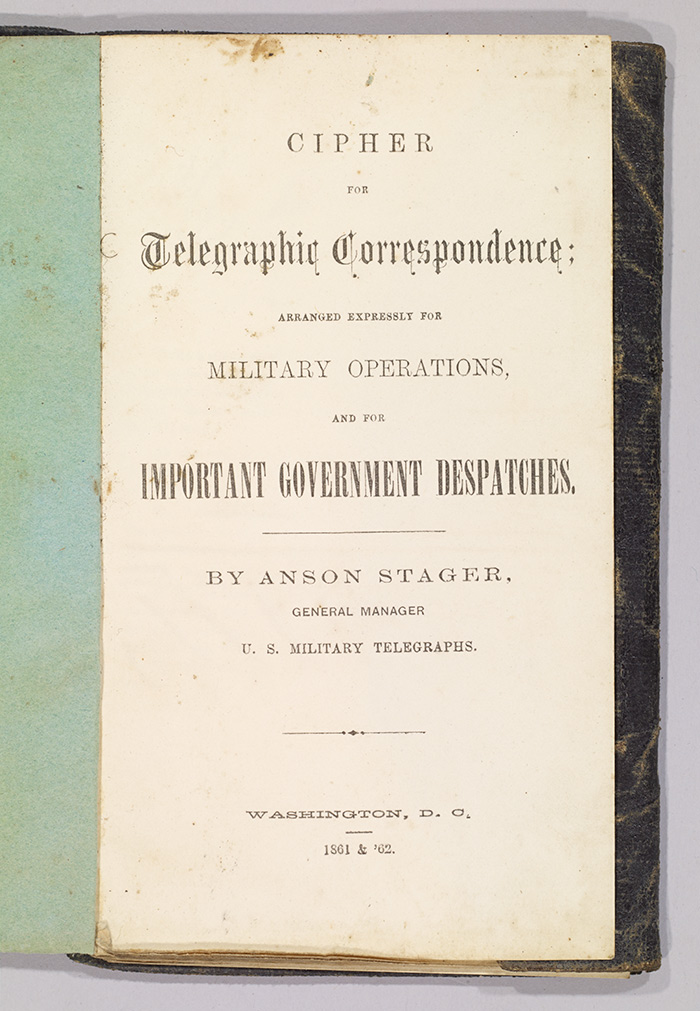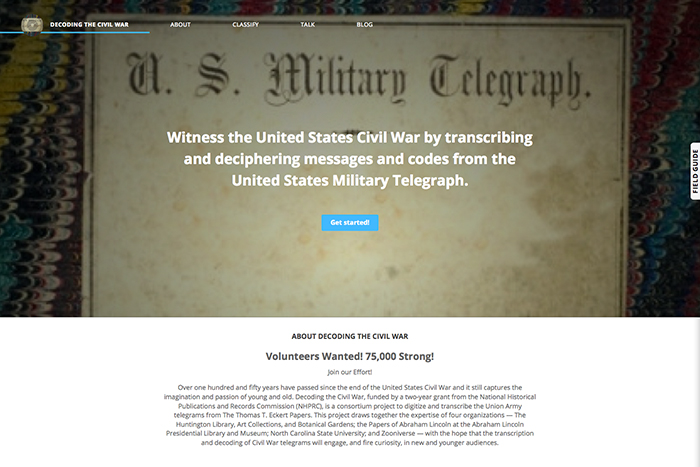Today The Huntington announces the launch of a crowdsourcing project to transcribe and decode U.S. Civil War telegrams from its collection. What follows is the text of the press release about the project’s launch.
In a move to gain new insights into the U.S. Civil War, The Huntington Library, Art Collections, and Botanical Gardens announced today the public launch of an innovative crowdsourcing project to transcribe and decipher a collection of nearly 16,000 Civil War telegrams between Abraham Lincoln, his Cabinet, and officers of the Union Army. Roughly one-third of the messages were written in code.
The Huntington is collaborating on the “Decoding the Civil War” project with Zooniverse (the largest online platform for collaborative volunteer research), North Carolina State University’s Digital History and Pedagogy Project, and the Abraham Lincoln Presidential Library and Museum.
“The Huntington and its partners are delighted to make this historic collection accessible to the public in a way that will help improve our understanding of this critically important period in our nation’s history,” said David Zeidberg, Avery Director of the Library at The Huntington. “This is a digital humanities project that holds the potential to transform our engagement with the past, inspire further research, and help students everywhere gain a better understanding of U.S. history, digital literacy, and the power of collaboration.”

Example of a coded telegram, Thomas T. Eckert Papers. The Huntington Library, Art Collections, and Botanical Gardens.
The Huntington acquired the exceptionally rare collection of telegrams in 2012, composed of a nearly complete archive of Thomas T. Eckert, the head of the military telegraph office of the War Department under Lincoln. The archive was thought to have been destroyed after the war and includes crucial correspondence that has never been published. Among the materials are 35 manuscript ledger books of telegrams sent and received by the War Department, including more than 100 communiques from Lincoln himself. Also included are top-secret cipher books revealing the complex coding system used to encrypt and decipher messages. The Confederate Army never cracked the Union Army’s code.
The “Decoding the Civil War” project provides public access to digitized images of the telegrams and code books through the Huntington Digital Library. In addition, the project’s crowdsourcing website on Zooniverse engages “citizen archivists” in the deciphering of the telegrams with greater efficiency and accuracy than could be accomplished by staff members at the partnering institutions.
“Crowdsourced digital projects involving transcription have begun to provide a tremendous opportunity for both institutions and interested citizens,” said Dan Lewis, chief curator of manuscripts at The Huntington. “The Smithsonian and the Library of Congress both have implemented projects that let ‘digital volunteers’ help make historical documents more accessible, to the benefit of the world beyond their walls. We expect this project to be similarly engaging for anyone interested in the history of the Civil War—and it’s accessible through just a few computer clicks.”

Title page of “Cipher for Telegraphic Correspondence,” Anson Stager, Washington, D.C., 1861–62, Thomas T. Eckert Papers. The Huntington Library, Art Collections, and Botanical Gardens.
The project also provides a decoding activity for classroom students and museum-goers that is connected to Civil War milestones and provides inquiry-based educational modules that can be used to bring history alive. Through The Huntington’s partnerships with multiple Los Angeles area school districts and with North Carolina State University’s Digital History and Pedagogy Project, the educational modules will be integrated into teacher workshops reaching more than 1,000 teachers of at-risk students.
Built and managed by the University of Minnesota's Zooniverse team, the crowdsourcing project itself has three phases. “In the first phase, underway now, interested volunteers go online to transcribe the nearly 16,000 telegrams line by line, creating an extraordinarily rich database,” said Mario Einaudi, Kemble Digital Projects Librarian at The Huntington. In the second phase, volunteers will comb the database to identify significant people, dates, and times, enabling the creation of a robust search function. In the final phase, code books in the archive will be used to decipher the encoded telegrams, potentially providing fresh insights into the history of the Civil War.

There are nearly 16,000 telegrams for volunteers to decode, line by line, on the "Decoding the Civil War" site on Zooniverse.
People interested in participating in the project can go to its Zooniverse website, "Decoding the Civil War," take a brief tutorial that explains the process for transcribing a telegram, and find further information on the project. If participants are interested in joining discussions on particular telegrams, then they will need to create a user name and password by registering with Zooniverse.
The transcribed telegrams will be openly available to scholars and others interested in telegraphy, cryptography, wartime communications, technology, civilian-military relations, and many other aspects of the U.S. Civil War or American history more generally.
The project is partially funded by a two-year federal grant from the National Historical Publications and Records Commission.
Read more about the project on the "Decoding the Civil War" blog.
Kevin Durkin is editor of Verso and managing editor in the office of communications and marketing at The Huntington.

